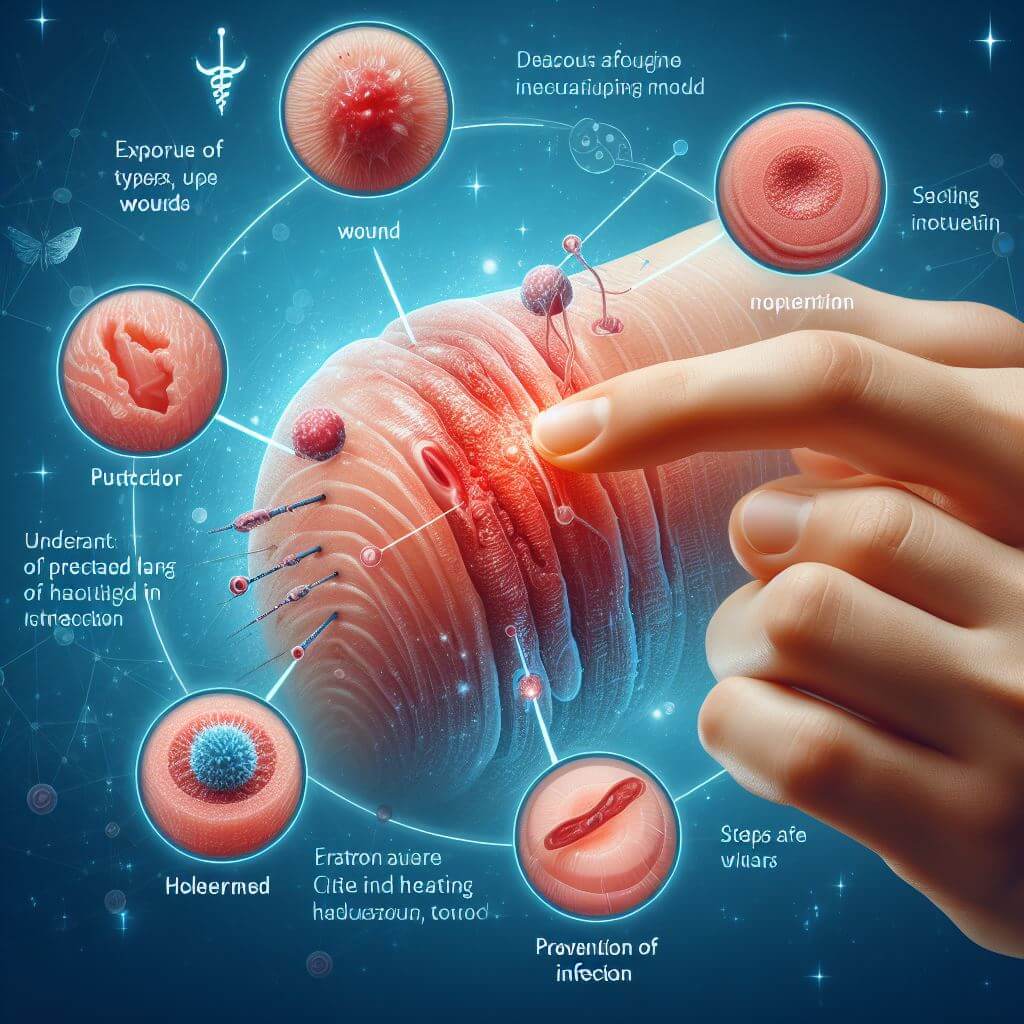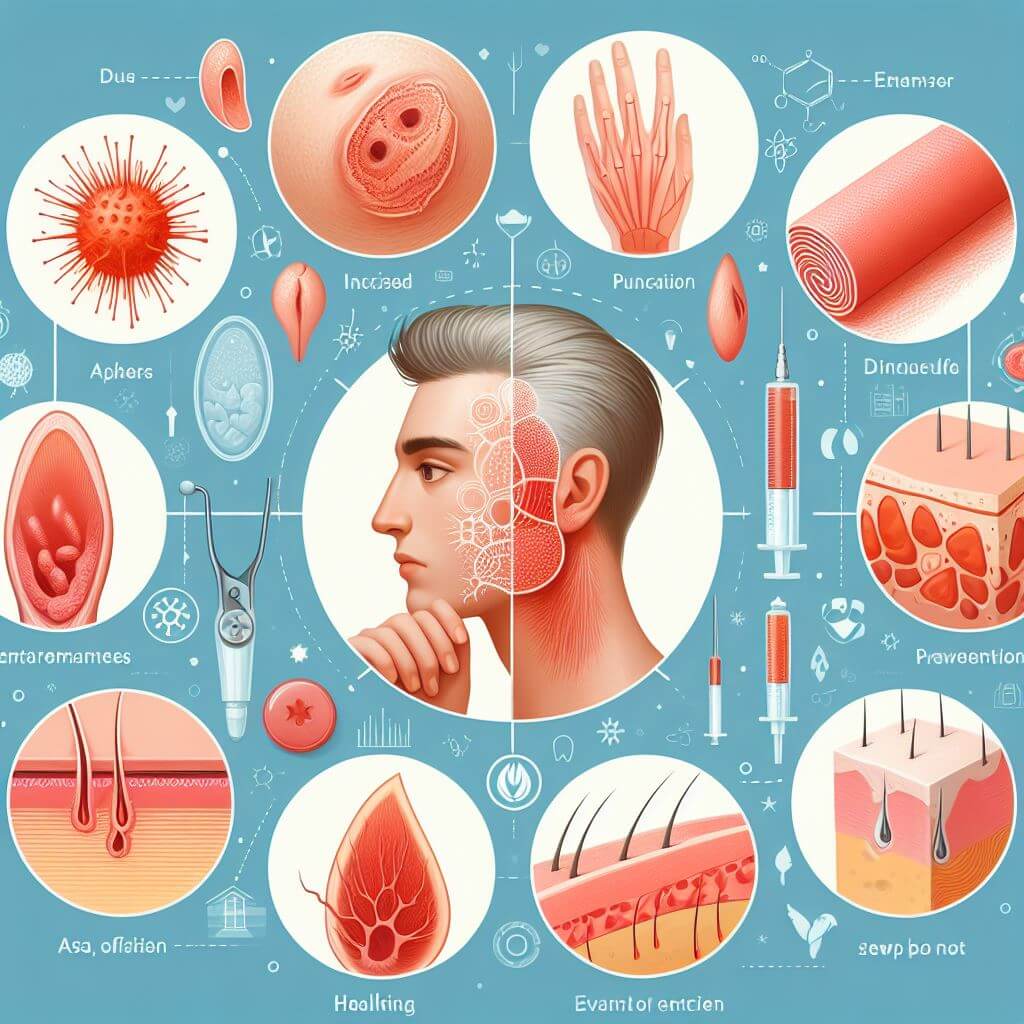Explore the diverse types of wounds, from incised to puncture, and learn about the fascinating healing process. Understand factors affecting healing, prevention of infection, and steps for wound care.

Wound; a traumatic disruption of the continuity of any body tissue. The term usually suggests accidental injury, but surgeons inflict intentional wounds in practically all operations.
Types of Wounds
Wounds may be classified according to the causative agent, either specifically, such as knife, bullet, or shrapnel wounds, or generally, such as burn or crushing wounds. Surgeons usually classify wounds on the basis of their gross appearance: incised, a sharp, clean Cut due to a cutting instrument; lacerated, a more jagged, irregular wound; contused, a wound in which the edges are crushed; avulsed, a wound in which some of the tissue is torn away; penetrating, a deep wound entering, for example, the chest or the abdomen; puncture, a deep wound with a small external opening; and nonpenetrating, injury to subcutaneous tissue or viscera without disruption of the body integument. Certain types of wounds and those involving specific tissues may be further subdivided. Fractures (wounds of bone) are classified by descriptive terms such as spiral, comminuted, and impacted. Bums are categorized as first, second, or third degree depending on the depth of tissue injury.
Healing of a Wound
The healing of a wound is a complex physicochemical process that is only partly understood. Healing may be affected by many factors in the wound and in the body generally, either adversely or beneficially. After a wound has been made, several changes occur simultaneously. Bleeding either stops spontaneously or is controlled by bandaging or other means. Dead tissue is removed by the body or by cutting it out (debridement). If the surfaces of the wound are in fairly close contact, the space is filled by blood and tissue juices, which, in addition to other functions, effectively seal the wound. A scaffold consisting of a fine network of protein molecules called fibrin then forms, and into this grow two of the tissues essential for repair. These are connective tissue cells (fibroblasts and histiocytes) and tiny capillary blood vessels. At this stage the repair tissue, called granulation tissue, can be seen in a healing open wound as a red, velvety granular surface. As time passes, several changes take place simultaneously. The fibroblasts produce a fibrous protein called collagen, which gives the wound strength. The histiocytes scavenge cellular debris, foreign bodies, and blood seepage. And the capillaries decrease in number and nearly disappear. The replacement of red capillaries by white collagen explains why a new scar is red at first but then becomes white after several weeks.
One measure of the progress of healing is the strength of a wound. A sutured wound loses strength slightly for 2 to 4 days and then rapidly gains strength up to the 7th and 14th day, following which a slow gain in strength may continue for several weeks.
Factors Affecting Healing
Local factors that affect healing include the type and location of the wound, amount of dead tissue, number and kind of bacteria, presence and type of foreign bodies, blood supply of the wounded part, and the treatment given. A foreign body in a wound may be absorbed by the tissues, which is what happens to catgut used to close a wound; or it may be encapsulated (surrounded by scar tissue), as might happen to a small piece of glass, or extruded, as in the case of a splinter that stays in a wound for some time and then appears on the surface. General body factors that affect healing include age; the presence of certain diseases; and nutrition, especially adequate amounts of protein and vitamin C.

Prevention of Infection
Surgeons take elaborate precautions to prevent infection of the operative wound. Operating rooms are isolated and the air filtered to remove bacteria. Ultraviolet lights may be used to kill the bacteria in the room. Surgeons and nurses wear special clothing, including masks. Gowns, gloves, linens, instruments, and all other materials used in the operation are sterile. The skin is prepared with antiseptic agents and the wound carefully protected. Antibiotics are sometimes administered.
Accidental wounds are infected when they occur, but the virulence of the infection varies. The wound should be protected with a clean dressing. Water may be used to irrigate the wound, but strong antiseptic agents should not be placed in the wound, as viable cells will be destroyed. A minor cut may be washed with water and dressed with petroleum jelly. A more serious wound should be attended to by a physician.
***This article is for informational purposes only. It is not a doctor warning or recommendation.